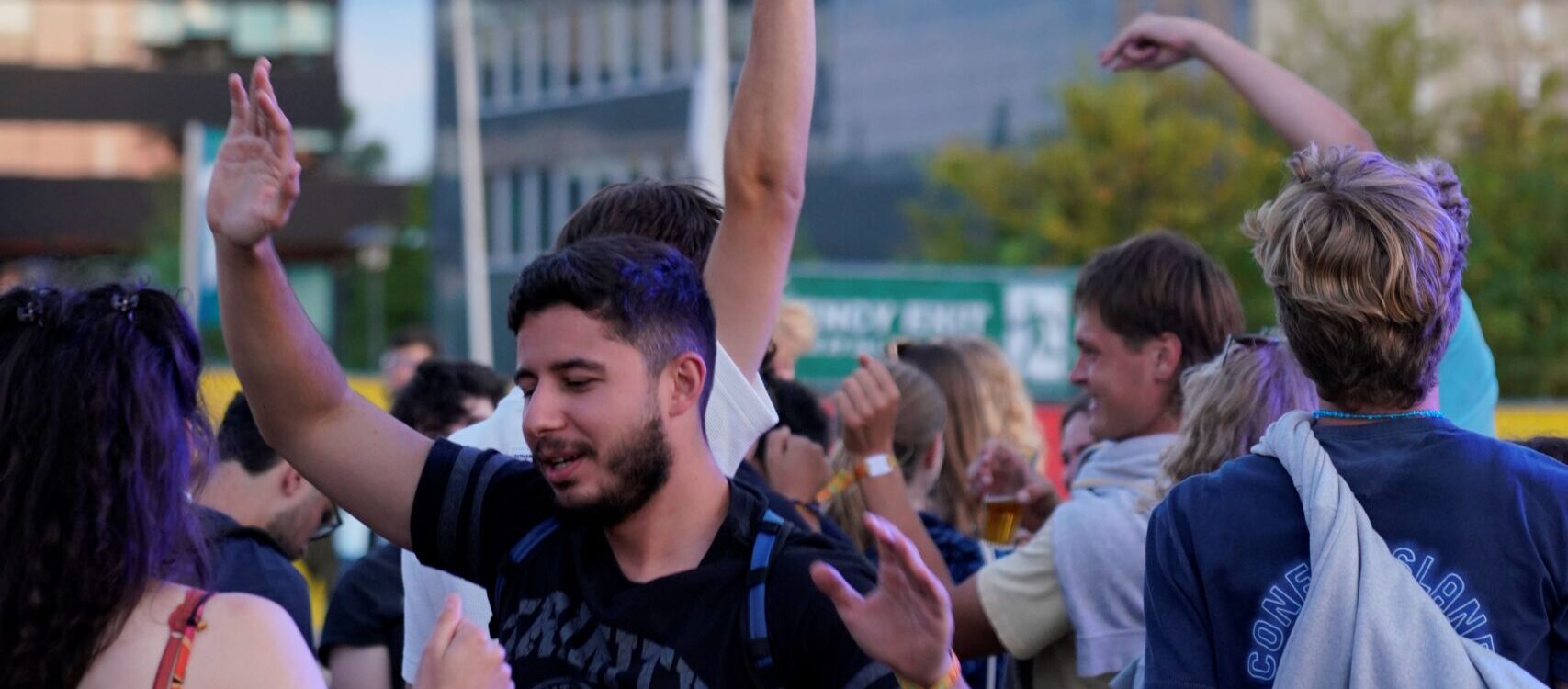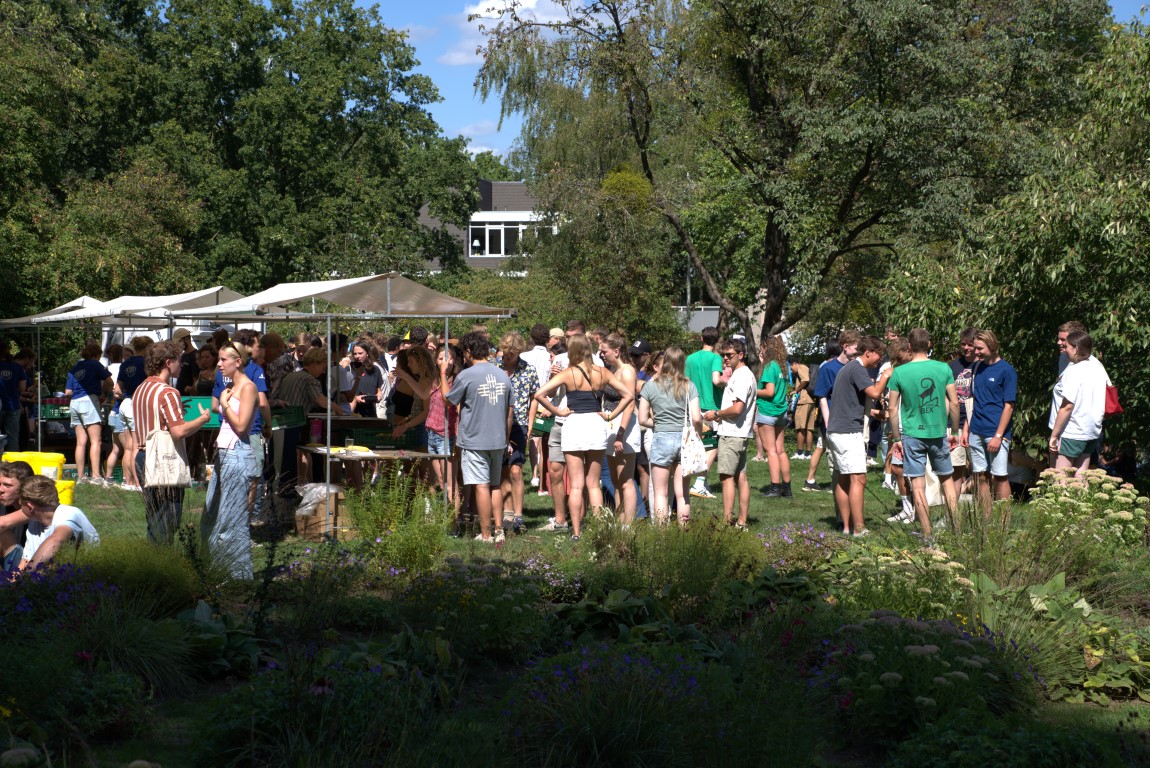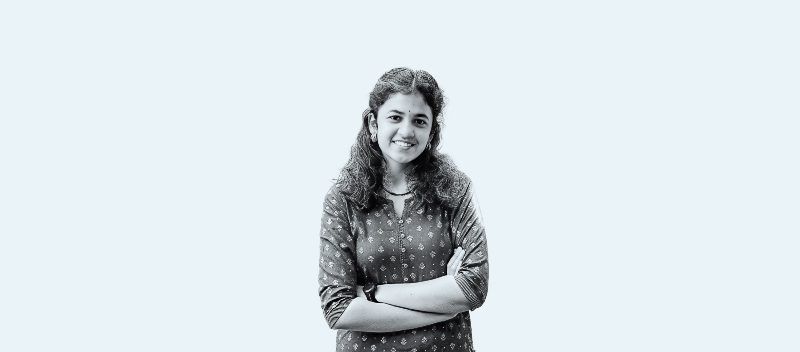Every summer, the road between Atlas and Forum is blocked off by the AID festival grounds. Unauthorised access is prohibited. This means that colleagues who have nothing to do with the AID have to take a detour. However, there are always people who slip through the gates to sneak a peek behind the scenes. For these curious colleagues, the AID crew organised a backstage tour this year, with Sjef Moling as their guide.
The journalists at Resource were also curious. Here are ten things you may not have known about the AID.
1 Washing up!
Three years ago, the AID stopped using disposable plastic and paper for sustainability reasons. No more single-use cups, plates and cutlery, but hard plastic versions that can be reused year after year. That does mean washing up!
This year, that is done in a mobile dishwashing kitchen, behind the scenes at the festival site. Every day, around six volunteers spend four hours washing up for the AID. The washing up is done with professional dishwashers, but the volunteers still dry everything by hand. The dishes from events not held on campus – such as the lunch in the Arboretum – are also brought to the festival site to be cleaned. After the intro week, this plastic tableware is stored away for the rest of the year. ‘Although it is now also used during open days’, says Moling.
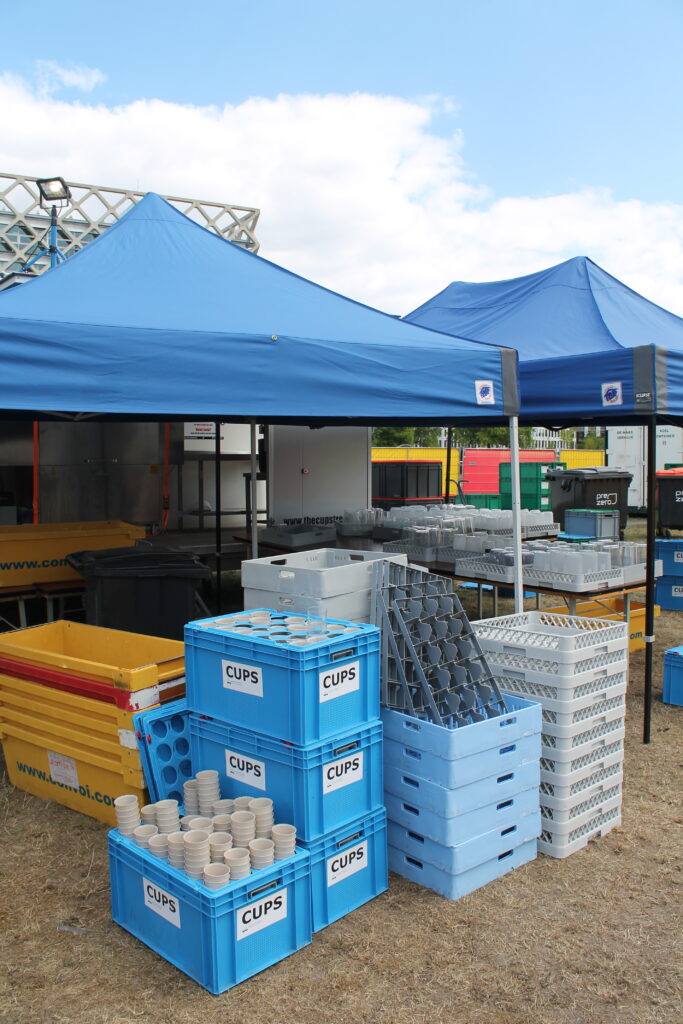
2 Mains power
Whereas many events on fields run on generators, the AID uses mains power. ‘The site is designed for events, so water and electricity are available and just as green as on campus’, says Moling. This reduces noise and bad smells and is also cheaper. ‘When we organize something at another location, we have a kind of mobile battery pack with solar panels on it, so that it can also be green and noise-free there.’
3 Most popular drink
What do new students like to drink most? Hint: not beer! Last year, more hard seltzer was drunk than beer during the AID. The drink is hugely popular with younger generations. At parties, it often comes in cans, but this year it is on tap during the AID. This is for logistical reasons, says Moling. ‘It was so popular that we couldn’t get enough cans.’
4 Paying with a wristband
Every year, AID participants wear a wristband with a chip in it. It contains information about their registration, but participants can now for the first time also put money on the mini card to pay at the bar.
5 Volunteers
Around two hundred volunteers help out during the AID. Crew members are present from roughly eight in the morning until three in the morning. The AID programme usually lasts until eleven o’clock in the evening, but then there is still tidying up and cleaning to be done. After that, they close the day together. Incidentally, not all volunteers are students: around 10 per cent are alumni or staff members. Rolf Marteijn, Director of Education for Nutrition and Health, has even been involved with the AID since 1993.
6 Mantra
Near Forum is a large party tent where only crew members are welcome: their base of operations. There, they do ‘everything but sleep’.
The messy atmosphere is reminiscent of a student house or summer camp: coats are hanging everywhere, bags are lying around, and there are bins of food. Against the back wall of the tent hangs a flag with the crew mantra: ‘It’s fun and everything will be fine – it’s fine and everything will be fun’. ‘The second part is for when you’re feeling down and it’s not fun’, says Moling. ‘Because that will pass.’
7 Do-it-yourselfers
Installing power, decorating stage sections and moving heavy equipment with forklifts: it’s all done by student volunteers. Some already have the skills, others are eager to learn. ‘If you’ve been involved in the organization for a few years and you enjoy it, we’ll pay for you to take a course to get your forklift license, for example, so that you can become part of the new generation that can do that kind of thing.’
8 Playing at the campsite
At the AID campsite, behind Axis, cows normally roam around. This week, around two hundred new students are sleeping there. The Paragon board game club is there several times in the evening to play games, and there is also a campsite bingo on the first evening. ‘That has become something of a tradition, it helps everyone to relax a bit.’
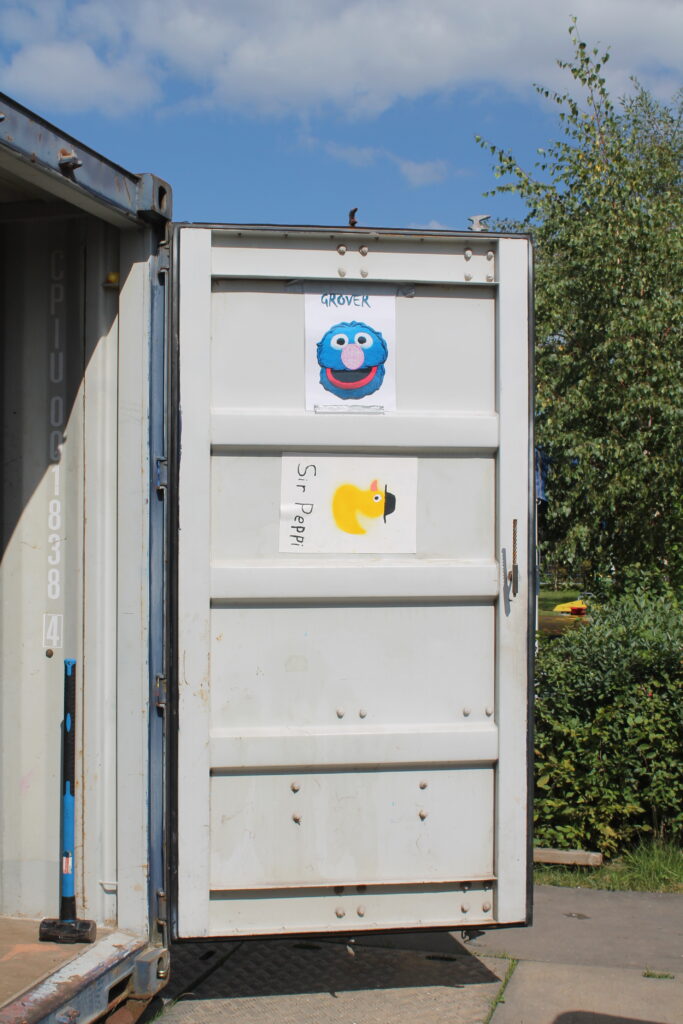
9 Cookie Monster, Grover, Aart
The AID has three shipping containers full of materials. The containers are hidden away in a corner of the campus where no one ever goes, Moling explains. Just before the AID, they are brought out so that the organisation can retrieve the necessary cables, rolls of tape, first aid vests, dustpans and brushes, a bingo machine, cable ducts and other important items. It started with one blue container, which was named Cookie Monster after the character from Sesame Street because of its colour. When a second blue container was added, it naturally had to be named Grover – also a blue Sesame Street character. The sail roof stretched between the two containers is yellow and is called Pino. The third container is grey and is called Aart. You can guess why.
10 Popular
All university cities have introduction weeks, but they are not nearly as popular everywhere as they are in Wageningen. Here, around 90 to 95 percent of new students participate in the AID every year, says Moling. ‘That’s a nice percentage, although I personally think everyone should participate.’
Translated with DeepL.com
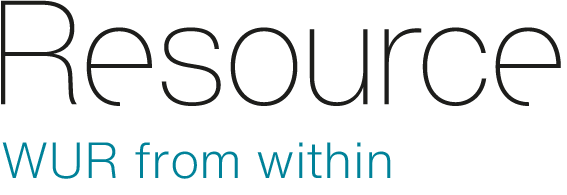
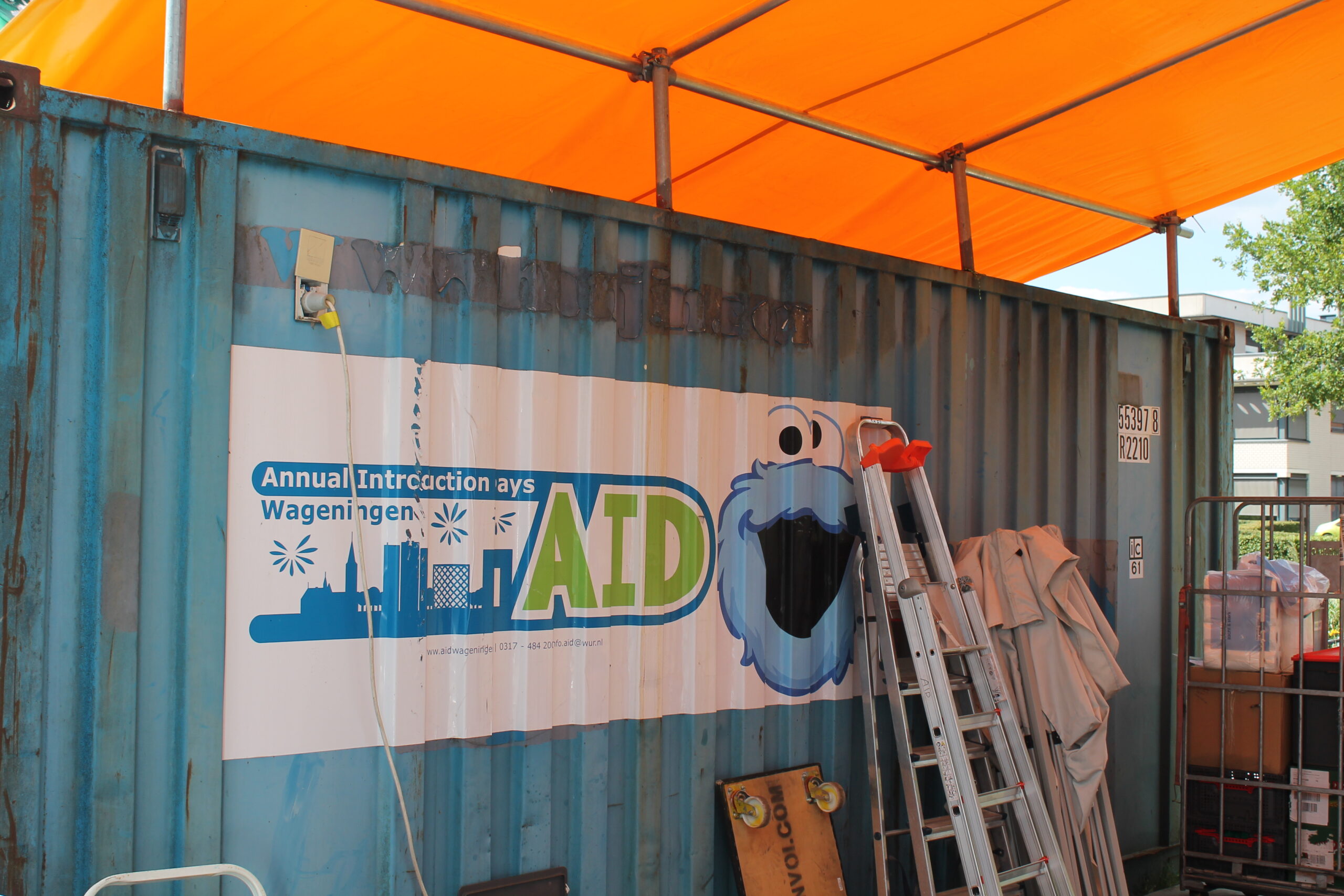 The first AID container was blue and was named Cookie, after the Sesame Street character Cookie Monster. Photo Resource
The first AID container was blue and was named Cookie, after the Sesame Street character Cookie Monster. Photo Resource 